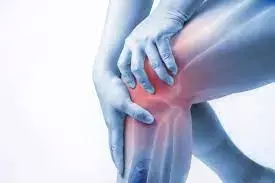- Home
- Medical news & Guidelines
- Anesthesiology
- Cardiology and CTVS
- Critical Care
- Dentistry
- Dermatology
- Diabetes and Endocrinology
- ENT
- Gastroenterology
- Medicine
- Nephrology
- Neurology
- Obstretics-Gynaecology
- Oncology
- Ophthalmology
- Orthopaedics
- Pediatrics-Neonatology
- Psychiatry
- Pulmonology
- Radiology
- Surgery
- Urology
- Laboratory Medicine
- Diet
- Nursing
- Paramedical
- Physiotherapy
- Health news
- Fact Check
- Bone Health Fact Check
- Brain Health Fact Check
- Cancer Related Fact Check
- Child Care Fact Check
- Dental and oral health fact check
- Diabetes and metabolic health fact check
- Diet and Nutrition Fact Check
- Eye and ENT Care Fact Check
- Fitness fact check
- Gut health fact check
- Heart health fact check
- Kidney health fact check
- Medical education fact check
- Men's health fact check
- Respiratory fact check
- Skin and hair care fact check
- Vaccine and Immunization fact check
- Women's health fact check
- AYUSH
- State News
- Andaman and Nicobar Islands
- Andhra Pradesh
- Arunachal Pradesh
- Assam
- Bihar
- Chandigarh
- Chattisgarh
- Dadra and Nagar Haveli
- Daman and Diu
- Delhi
- Goa
- Gujarat
- Haryana
- Himachal Pradesh
- Jammu & Kashmir
- Jharkhand
- Karnataka
- Kerala
- Ladakh
- Lakshadweep
- Madhya Pradesh
- Maharashtra
- Manipur
- Meghalaya
- Mizoram
- Nagaland
- Odisha
- Puducherry
- Punjab
- Rajasthan
- Sikkim
- Tamil Nadu
- Telangana
- Tripura
- Uttar Pradesh
- Uttrakhand
- West Bengal
- Medical Education
- Industry
MRI based Knee damage identification helps grade cartilage loss

The use of MRI-based grading of articular diseases allows for the particular selection of progressor knees for participation in clinical trials, as well as the identification of knees for which therapy is not needed (as an example we see knees without any cartilage damage though there is a presence of radiographic Osteoarthritis), as stated by an article published in Arthritis Care and Research.
No study has previously examined whether MRI-based ordinal multi-tissue assessment could support a more targeted selection of participants for a DMOAD trial based on projected accelerated subsequent cartilage loss and sensitivity to that projected accelerated subsequent cartilage loss. The previous studies investigating the association between MRI-detected tissue pathologies and subsequent quantitatively measured cartilage loss focused on selected MRI features only or on knees (predominantly) without radiographic OA.
In order to better prepare clinical trials with participants who have a high likelihood of structural progression, Wolfgang Wirth and colleagues conducted this study to identify which MRI-based articular pathologies are predictive of subsequent medial femorotibial compartment quantitative cartilage thickness loss.
A total of 599 OAI FNIH participants underwent semi-quantitative "MRI OsteoArthritis Knee Score" (MOAKS) baseline evaluations and quantitative cartilage thickness measures at baseline and year-2 follow-up. Based on changes in MFTC cartilage thickness (smallest detectable change threshold: -111m), knees were categorized as progressors or non-progressors. The existence and severity of MFTC MOAKS pathologies at baseline were compared to later MFTC progression using logistic regression. To calculate the sensitivity to change that may be attained when choosing knees based on MOAKS pathology, the standardized response mean (SRM) was computed.
The key findings of this study were:
The ensuing advancement was correlated with the presence of MFTC MOAKS cartilage damage, MFTC BMLs, medial meniscus extrusion or damage, as well as MOAKS severity subscales for cartilage and meniscus injury.
The SRM was correlated with the severity of these diseases and was higher in knees with these pathologies than in knees without them.
In conclusion, a useful approach for the precise identification of knees expected to display further structural advancement throughout the course of a trial is MRI-based semi-quantitative evaluation in only a few subregions. Additionally, MRI-based joint damage score allows for the exclusion of knees, where a course of therapy with DMOADs is not recommended.
Reference:
Wirth, W., Maschek, S., Wisser, A., Guermazi, A., Hunter, D. J., Kwoh, C. K., Nevitt, M. C., Eckstein, F., & Roemer, F. W. (2022). MRI‐based semi‐quantitative grading allows to specifically select knees with subsequent cartilage thickness loss. In Arthritis Care & Research. Wiley. https://doi.org/10.1002/acr.25078
Neuroscience Masters graduate
Jacinthlyn Sylvia, a Neuroscience Master's graduate from Chennai has worked extensively in deciphering the neurobiology of cognition and motor control in aging. She also has spread-out exposure to Neurosurgery from her Bachelor’s. She is currently involved in active Neuro-Oncology research. She is an upcoming neuroscientist with a fiery passion for writing. Her news cover at Medical Dialogues feature recent discoveries and updates from the healthcare and biomedical research fields. She can be reached at editorial@medicaldialogues.in
Dr Kamal Kant Kohli-MBBS, DTCD- a chest specialist with more than 30 years of practice and a flair for writing clinical articles, Dr Kamal Kant Kohli joined Medical Dialogues as a Chief Editor of Medical News. Besides writing articles, as an editor, he proofreads and verifies all the medical content published on Medical Dialogues including those coming from journals, studies,medical conferences,guidelines etc. Email: drkohli@medicaldialogues.in. Contact no. 011-43720751


